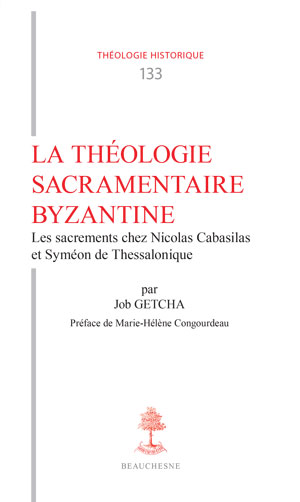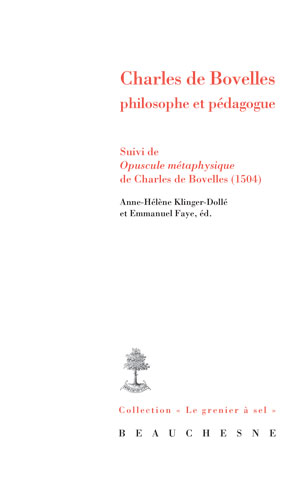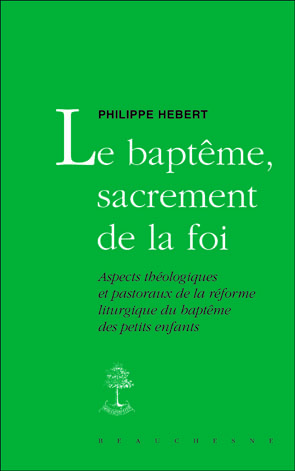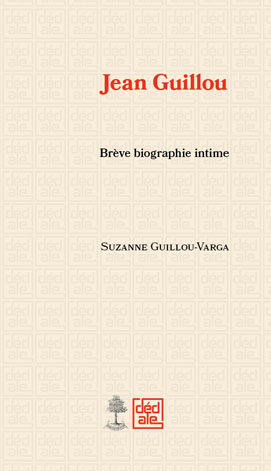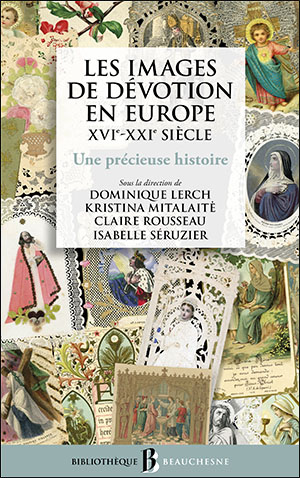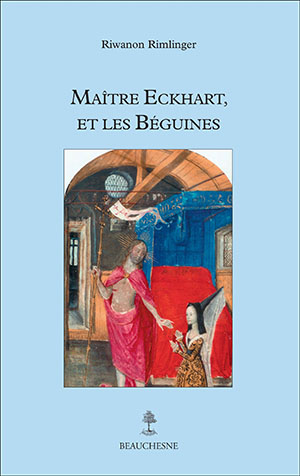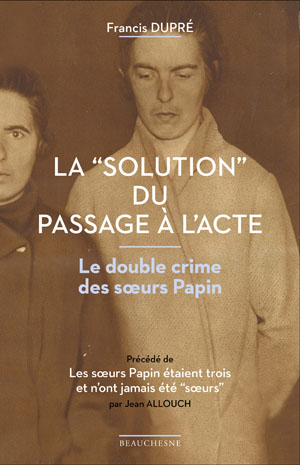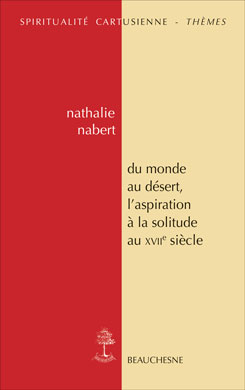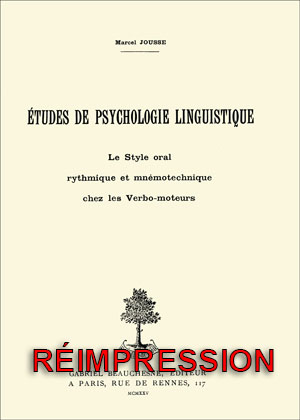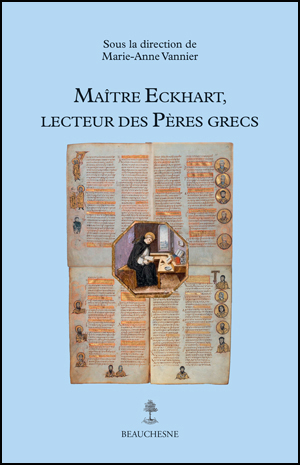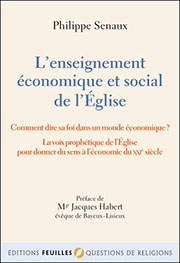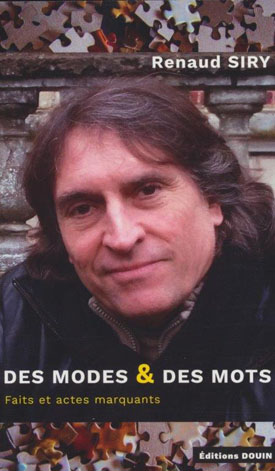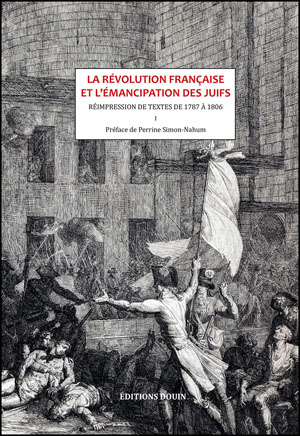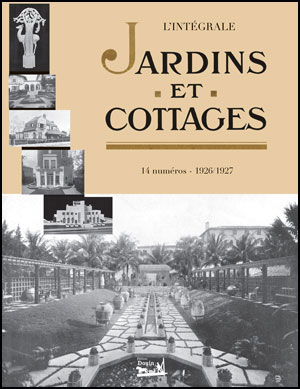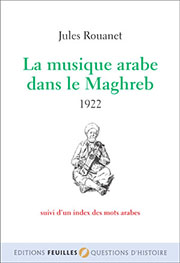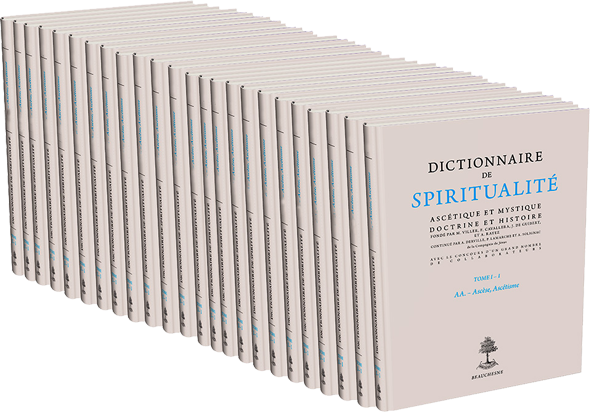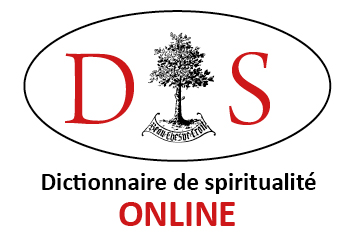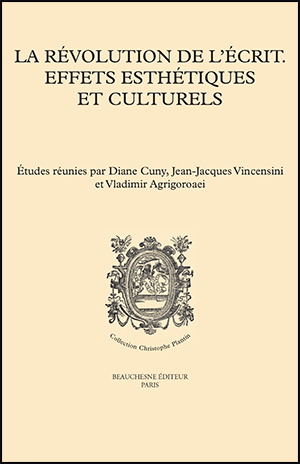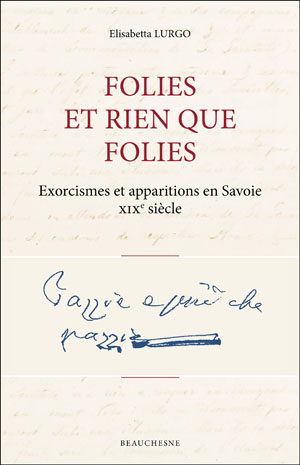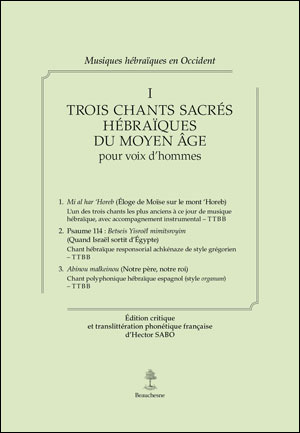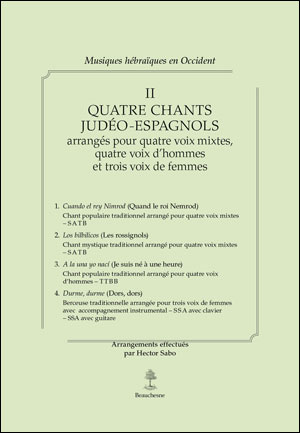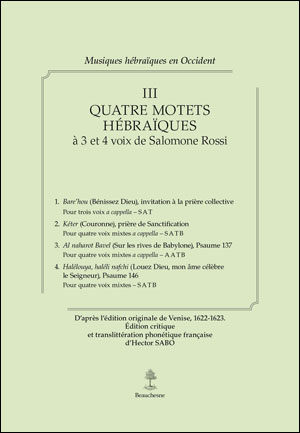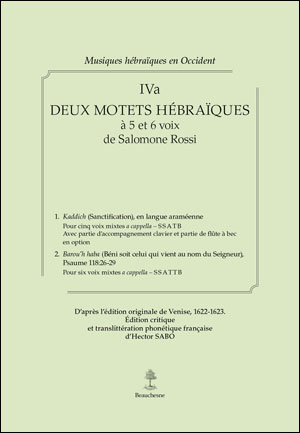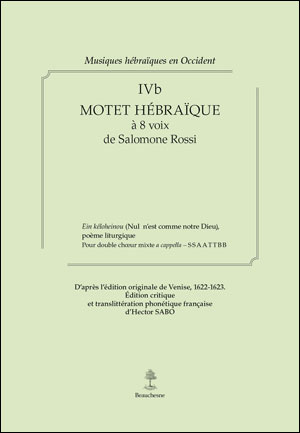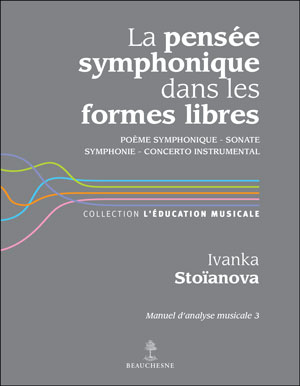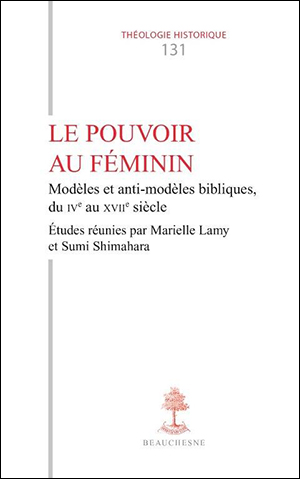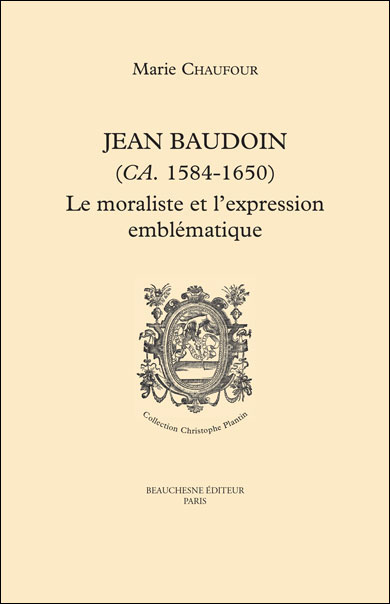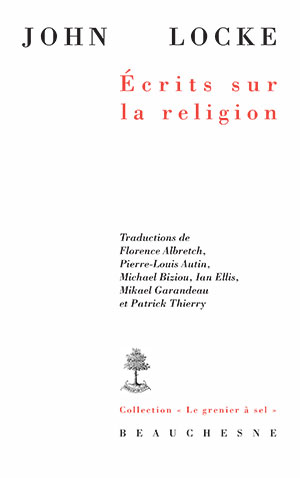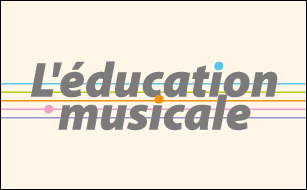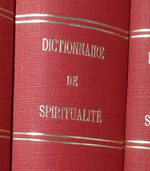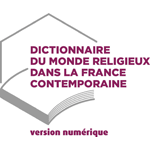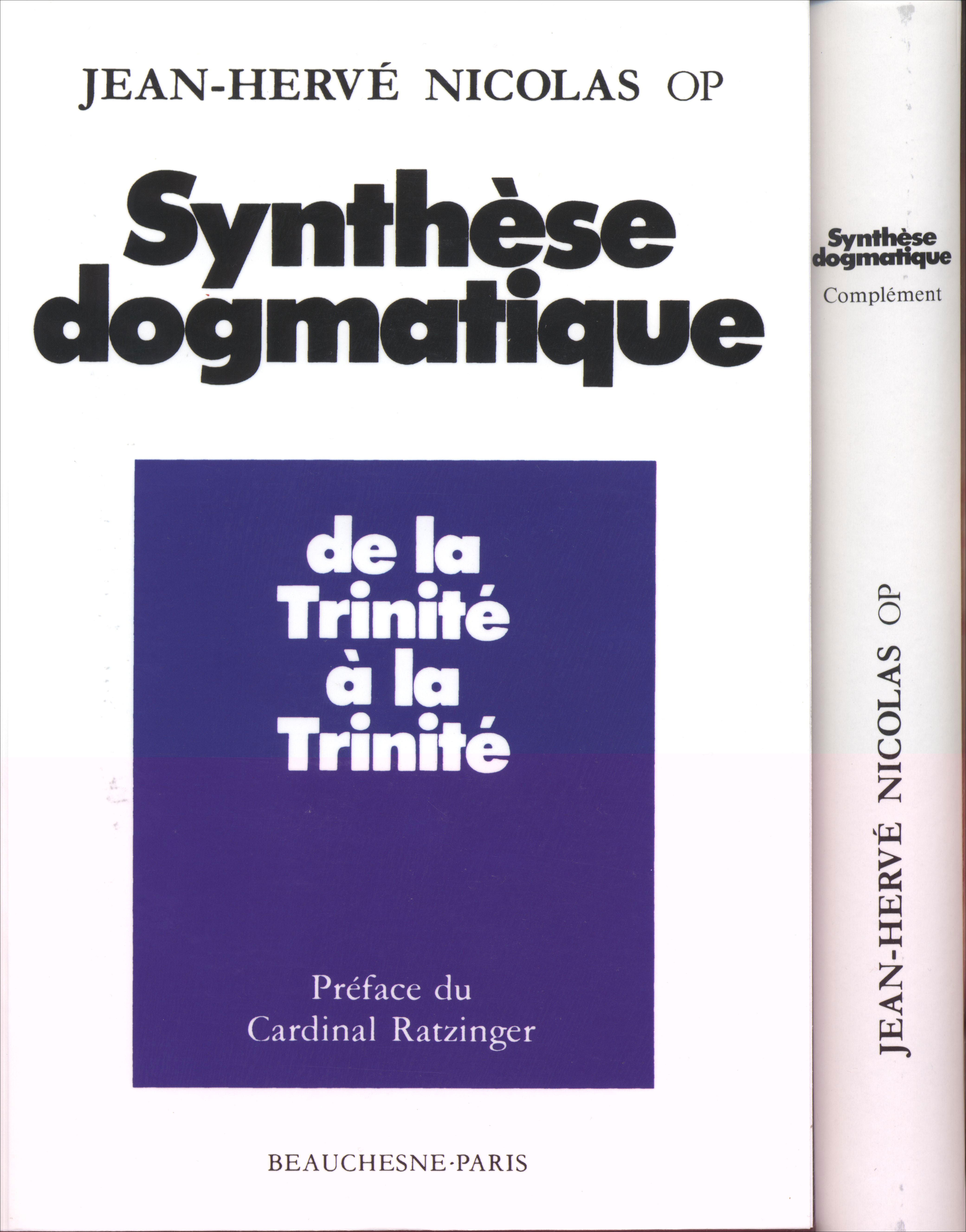Bernard POUDERON et Anna USACHEVA (eds)
|
EAN/ISBN : 9782701022123
|
Nb de pages : 279
|
Année : 2016
|
| 33.00 € |
Dire l'ineffable. Entre les anthropomorphismes de la Bible et une conception très haute de la transcendance qui est celle d'un platonisme réinterprété par le courant gnostique, les premiers Pères de l'Église, pour exprimer leur conception du Dieu suprême et distinguer leur « vraie philosophie » de celle des intellectuels païens, ont dû se créer leurs voies propres, conciliant l'héritage de la Bible et celui de la pensée grecque. Certains d'entre eux ont théorisé leurs principes dans une véritable réflexion méthodologique et introspective, d'autres les ont simplement laissé entrevoir. Le colloque dont ce volume constitue les Actes s'est attaché à définir les fondements méthodologiques de la définition de Dieu chez les Pères les plus représentatifs de la première théologie chrétienne, depuis Justin Martyr et Tertullien jusqu'à la fin de l'époque patristique.
Dire Dieu ou Comment parler et écrire sur Dieu selon les Pères de l’Église.
The significance of the methodology in our postmodern era of skepticism and a lack of confidence in different traditional and modern analytical hermeneutic techniques call forth the methodological investigation of the Byzantine literature – the forerunner of the Renaissance culture. In the 20th century, when the open-minded approach to the heritage of the European civilization triumphed over the debates on the preference of either Classical or Christian or Jewish Studies, scholars started to research the interaction of the three intellectual traditions within the culture of the Late Antiquity. However only nowadays, after a considerable progress in the historical and philological studies of the Byzantine literature, we can approach the conceptual analysis of the concrete literary techniques considering the gnoseological methodology of the Byzantine authors. The first striking thing, which fascinates the researcher of the patristic literature, is that the pathos of the acute philosophical disputes of that time was not less methodological than terminological – to put it simply, even within the Christian confession the debates originally emerged from the different gnoseological systems rather than from the disagreement in definitions. The more we proceed in our understanding of the philosophical context in connection with the actual literary tendencies of the late antique epoch, the better we realize the character of the Byzantine intellectual culture and thus can choose a correct hermeneutic approach to the patristic texts. The impartial and unbiased understanding of the Byzantine literature in its turn plays an irreplaceable role in the Renaissance studies. Therefore, we deeply appreciate the interest, which our colleagues from the field of the Renaissance studies have taken in the proposed theme of the Colloquium and the administrative support provided by the CESR. The planning for the Colloquium has been done by Bernard Pouderon, within the program Christophe Plantin of the Centre d’études supérieures de la Renaissance (UMR-CNRS 7323), attached to the Université François-Rabelais de Tours (France) and by Anna Usacheva, within the program of the international collaboration of the St. Tykhon’s Orthodox University (Moscow). The project of the Colloquium would not have been realized without the professional support and administrative assistance of our colleagues from different institutions. It brings me here to express our profound gratitude to the contributory institutions (listed in the alphabetic order):
– L’Association Textes pour l’histoire de l’Antiquité tardive (THAT); – le Centre d’études supérieures de la Renaissance (CESR) de Tours ; – la filière Lettres de l’Université François-Rabelais de Tours ;
– l’Institut Universitaire de France ;
– l’UFR Lettres et Langues de l’Université François-Rabelais de Tours ;
– l’Université orthodoxe Saint-Tichon de Moscou (Saint Tikhon’s Orthodox University, Moscow).
This interdisciplinary academic collaboration accounts for the fact that during the Late Antique and Byzantine epoch theological issues formed a discourse of the Christian, Pagan and Jewish intellectual milieus. The circumstances of the fundamental philosophical and theological debates were rather complicated by the multifarious alterations and challenges of the epoch. The thinkers of different educational and religious background in front of considerable historical and geopolitical changes in their endeavour to define the gnoseological and ontological principles assumed various premises and applied diverse analytical methods, hermeneutical techniques and literary genres. Thereby nowadays the interdisciplinary research and the united efforts of the specialists from historical, philological, theological and philosophical fields further the Patristic Studies, which in its turn, contribute to the Renaissance Studies.
The Colloquium has attracted 12 European scholars from different Academic Institutions.
Anders-Christian JACOBSEN has considered the fundamental concept of monotheism with fresh eyes. He has explored a remarkable difference between Hellenic, Jewish and Christian monotheistic doctrines. Searching for a coherent definition for the Christian monotheism, Jacobsen has examined the relevant fragments from the New Testament and the texts of the Apologists and has suggested a concept of the « inclusive monotheism ». Interestingly enough the Christian monotheism beside the Hellenic and Jewish monotheistic doctrines manifests its specificity at the doctrinal, liturgical and ritual levels. Jacobsen has observed the impact of the monotheistic doctrine on the baptismal and Eucharistic practices of the Early Church. In his endeavour to grasp and explain the complex and paradoxical nature of the Christian inclusive monotheism, Jacobsen has pointed out its rootedness in the Church mysteries, on the one hand, and in the personal mystical experience of the Christians, on the other. The inclusive monotheism oversteps the rational bounds and thereby leaves behind the philosophical realm and represents the complex theological monotheistic concept as a faith experience.
Gilles DORIVAL has also touched the fundamental conceptual and methodological issue namely, « Continuité et innovations de l’écriture théologique des Pères grecs ». Although it has been long since the interaction between the Jewish, Hellenic and Christian intellectual traditions within the Late Antique and Byzantine culture came up to discussion, there are still many questions left concerning the issue. In his observation of the most disputable and significant among the relevant questions, Dorival begins with the detection of the common literary and ideological trend in the Hellenic and Judeo-Christian traditions. The various intellectual milieus of the Late Antiquity took a remarkable interest in the exegetic practice. As a result, the manifold allegorical interpretations of the authoritative texts have appeared. Speaking about the specificity of the Christian exegetic methods, Dorival has demonstrated that the allegory was not an opposition to the literal interpretation but rather a way to perfect and fulfill the historic interpretation. The method of typology was aimed at combining the testimonies of the Old and New Testaments into an exposition of the coherent divine revelation. Furthermore, the typology, being able to demonstrate the eschatological perspective of the human history, opened space for creativity to the Christian authors. Referring to Origen’s fine metaphor Dorival has stated that the complexity and multifaceted nature of the Christian exegetic method were realized in the « style pour ainsi dire divin ». This definition is as beautiful as accurate because the divine inspiration was one of the obligatory requirements for a theologian. Inspired or not, the Christian authors frequently applied the different exegetic techniques seeking to create a divine masterpiece or a meaningful and striking composition. The richness of the representative material under investigation permits the scholars to penetrate it and to analyze the « so to speak divine style » of the Patristic authors, which Dorival has vividly demonstrated.
Petr MIKHAYLOV in his contribution presents the analysis of different types of the theological systematization from Irenaeus to John Damascene (from 2nd to 7th century). The width of the observation enabled to find certain structural and genre characteristics of the patristic theological discourse, which reveals the methodological distinction between the deductive and inductive theology. The deductive methodology implies the reasoning based on the dogmas of faith; deductive theological discourse descends from the principle dogmas (theologia) to the analysis of the divine providence (oikonomia). The inductive methodology emerges from the recollection and analysis of the slightest divine manifestations in the created world, which consequentially ascends a thinker to the high theological matters. As Mikhailov shows, the deductive method was much in demand of the Patristic authors due to its evident educational advantages. The inductive method was primarily used for propaedeutic purposes, for instance, for the mystagogical practice. Mikhaylov argues that the inductive method has some apparent similarities to the principles of the structuring material in the Middle-Platonic philosophical paideia. In both intellectual traditions (Christian theological and Platonic philosophical) there are examples of the tripartite thematic division to the ethics – physics – and the contemplative sphere. In Origen’s fine elaboration the theological induction transforms into an exegetic induction, intended to grasp and explore the spiritual meaning of the Scripture. Mikhailov classifies the systematical theological writings of the 2nd- 7th centuries and demonstrates that the inductive method, based on personal ascetic and mystical experience, was more frequently applied for the propedeutic purpose while the deductive method found its employment at the educational service of the Church.
Bernard POUDERON offers a wide, yet detailed overview of the apologetic gnoseological and literary techniques, which go back to either Jewish or Hellenic background. The attentive examination of the apologetic texts reveals an independent and full-fledged theological methodology of approaching the divine knowledge. The apologetic theological methodology emerged from the creative comprehension of various forms of the Christian revelation, such as exegesis of the Holy Scripture of personal contemplative experience. Generally speaking, the apologetic methodology proposes two approaches to God’s comprehension: objective (tied with reason) and subjective (tied with faith). Each of the ways implies some concrete literary techniques. Furthermore, the Apologists proposed a concept of the « logical » (i.e. via the divine Logos) comprehension of God, yet they remarked that the full perception of God is impossible. Endeavoured to approach the divine knowledge, the Apologists focused on the incarnation and resurrection of Christ, who became the instrument of the divine revelation and the permanent object of the theological contemplation (θεωριvα). Pouderon has showed that the list of the apologetic requirements to a theologian consisted of purity, true faith, the propedeutic learning of the Scripture and the praying for a grace descent. The investigation of the apologetic theological methods, exegetic and catechetical techniques, presented by Pouderon confirmed that the apologetic gnoseological principles yet in not so many words but still give a full assessment of the methodological palette of the mature Christian theology.
Géraldine HERTZ has devoted her contribution « Un Dieu “pas même indicible” (Elenchos, VII, 20, 3): examen de la théologie basilidienne dans son rapport polémique aux théologies contemporaines » to the analysis of a doctrinal system that emerged in the second century from Basilidian circles and is described in the Refutation of all the heresies. This Basilidian source is concerned with the fundamental issue of divine ineffability in a polemical way, namely, in contradiction to the generally known philosophical and religious conceptions. The famous Platonic doctrine of ineffability had undergone a considerable change in the course of time. In the Corpus Platonicum ineffability was considered a predicate of the non Being, in the Pseudopythagorica – a predicate of the matter; lately in the Middle-Platonic school the ineffability was considered a predicate of the Being (οJ ω[ν) par excellence, of the structural principle of the matter i.e. of God. The author of the Elenchos argued with the philosophers and theologians, who approached God as the One (το; ε{ν) or as the Being (οJ ω[ν) – either in the neutral (το; ο[ν – Plato) or masculine (οJ ω[ν – Exod. 3, 14) form. Basilidian reasoning defined the highest principle as the non-Being (ουjκ ω[ν), proclaimed the insufficiency of the famous Middle-Platonic statement θεο;ς α[ρρητος (ineffable God) and replaced it by a more radical – θεο;ς ουjδε; α[ρρητος (God even not ineffable). Despite this obvious and likely intentional affirmation, the analysis of the Basilidian motivation and argumentation leaves no room to doubt that there is no meaningful contradiction or even difference between the two concepts. The philological analysis brings Hertz to the conclusion that under both formulations (viz θεο;ς α[ρρητος/θεο;ς ουjδε; α[ρρητος), nothing but the same ineffability of God was meant.
Enrico NORELLI has explored what it means to speak about God according to Marcion. The departing point of Marcion’s doctrine was his negative attitude to a human body. In his conception, during the act of creation the beautiful soul was bound with the material substance of a human body. The logical principle and order of the creation, which was praised by many classical philosophers and Christian authors found disfavour in Marcion’s opinion. The God of the Old Testament, who was literally responsible for the creation of the world, was considered by Marcion as the Father of the evil, of the cruel and unjust natural law, inherent to the human mind and presented in its entire primitive and ruthless look in the Scripture (eye for eye, tooth for tooth). As long as, according to Marcion, there is no way for salvation of a material body, the man has nothing to do but tear himself away from the world and make a transgression into another nature. For the first time, this mode of salvation was enunciated by the Gospel. Norelli has showed that in Marcion’s thought the evangelic message could only be communicated through the evangelic language, although the practice of the evangelic truth is better than its preaching. Marcion deprives the human rationality from any chance to approach the divine realm because of its bond with evil, natural logic and foreignness to the divine absolute mercy. Such an approach makes Marcion and his God voluntary excluded from the reality of this world. Norelli has demonstrated, how Marcion in his endeavour to find the unconditional mercy and irrational absolute, failed to conciliate even the two Testaments with each other and was obliged to strike out those parts of the New Testament, which contradicted his unconditional logic.
Tobias GEORGES has examined the way Tertullian spoke and wrote about God. His thorough analysis of Tertullian’s Apologeticum has demonstrated that neither narrowly understood the title of the Tertullian’s work, nor its superficial polemic content revealed the breadth of the author’s design. To discover it Georges has enquired about the real attendance of the writing. Although officially the Apologeticum, as befits the genre, was addressed to the Pagans and Roman authorities, the scholastic interest could not be satisfied by this general information but sought for the details. Georges examines the arguments of Tertullian and, by means of historical, philological and philosophical analysis, compares the real implicit content of the Apologeticum with its superficial plotline and finally comes to interesting conclusions. Tertullian likely addressed his work not only to the Jews but also to the non-Jewish, Hellenic auditory. The appeal to the Jews, preserved in the Apologeticum, came from its complex polemic message, namely, from the agreement with the Jewish monotheism and disagreement with their too terrestrial messiahs’ expectations. Georges’ representative presentation shows how the professional lawyer, from whom one might expect a classical apology, applies the genre norms in a sophisticated way, being concerned much more about a persuasive presentation before the non-Jewish public than about a defense against the Jewish criticism.
Lorenzo PERRONE in his contribution has considered the theological method of Origen from different aspects (pedagogical, lexical-philosophical, and ascetical-exegetical), since the great teacher of the ancient Church himself regarded his theological mission as a pedagogical, philosophical and ascetical task. This complex approach reveals the specific character of the Christian gnoseological methodology that although superficially might seem familiar, in its depth contains the exclusive gnoseological principles, which allow quite different ideas and conceptions from the Hellenic and Jewish traditions to merge without contradiction. Perrone has presented an excellent example of this exquisite complexity in his examination of Origen’s interpretation of the term θεολογιvα. Origen began his reasoning with the origin of the term and its philosophical connotations and came to the Christian understanding of the matter, where he defined the three levels – moral, physic and contemplative (εjποπτικη; θεολογιvα). Exploring how Origen realized his elaborate theological conception Perrone has observed the famous Greek text of the Homilies on the Psalms, which very recently became known to scholars thanks to a spectacular discovery in the Bavarian State Library. The expressive fragments show the mature theologian who approached exegesis as spiritual and ascetical practice and regarded his mission as a challenge and a chance – chance for personal salvation. Perrone has showed that, according to Origen, the combination of common and personal plans in the theological discourse depends upon the irrational divine nature, which remains ineffable in its essence but at the same time, communicates itself to everyone to the extent possible.
Pier Franco BEATRICE in his presentation has showed how conflicting theological discourses under the pressure of different historical and polemical circumstances in the age of Constantine provoked the misinterpretation of Eusebius’ and Marcellus’ doctrines. Beatrice has depicted the vivid, multicolored background of Eusebius’ monumental masterpiece – Praeparatio Evangelica, where the three intellectual traditions (Hellenic, Jewish and Christian) each in its own way took part in the preparation for the evangelical preaching. The detailed studies of the Hellenic and Judeo-Christian interaction have numerously proved that this exquisite Eusebius concept is not altogether foreign to the truth. Observing the issue, Beatrice has added his argument proving the intimate connection between the Christian and Hermetic traditions. Exploring the origin of the term οJμοουvσιος in Constantine’s theological lexicon, Beatrice in contradiction with the opinion of some previous scholars has cogently argued that Constantine accepted theological ideas of Lactantius who in his turn adopted Hermetic theological doctrines for the Christian purposes. The Emperor’s intervention into the Nicene Creed provoked many questions and complex historical consequences, such as the disputation of Eusebius and Marcellus, which emerged from the political and personal rather than doctrinal reasons.
Olga ALIEVA has investigated the details of the theological and exegetical method of Basil the Great through analyzing the usage of the terms λοvγος/λογικοvς in the Homily on the words “Be attentive to yourself”.
Since Basil’s conception of logos is rather complex, Alieva has considered it from different aspects, reflecting the singularity of Basil’s thought, namely, from anthropological, moral and exegetical aspects. From the anthropological viewpoint, the divine Logos appears as the image of God inherent to human being – the one, which consists in human logos i.e. in mind. The moral aspect reveals that logikos means to obtain the capability of perceiving and doing well, on the contrary, alogos is an attribute of a sinner. From the third exegetical aspect, the meaning of logikos appears as a capability of hearing the word of the Scripture and of its correct interpretation. Regarding the issue Alieva has made a remarkable observation concerning the fragment from the Hexameron, where Basil denounced the false understanding of the divine Logos, which, as Alieva has invented, belonged to Marcellus of Ancyra. The complex Basil’s approach differed from that of his opponents who eagerly promoted the sufficiency of the rational method for theology. Indignant at this wretched methodology Basil in a letter to Amphilochius depicted his beautiful theological method, which includes three components: the comprehension of God through His actions, the keeping of His commands and the intimacy with Him.
Anna USACHEVA has explored how Gregory of Nazianzus suggested to think and to write about God in his first and second theological speeches (Or. 27, 28). In the 27 speech Gregory described the external conditions appropriate to theological practice and proclaimed self-purification the main requirement for a theologian. To express his ideas, Gregory applied the images of the Platonic dialogues and equated Eunomians to sophists. In the 28 speech Gregory applied the manual scheme: he widely used Origen’s reasoning from the De principiis and presented the principles of the Christian gnoseology, which in many aspects resemble those of the Middle-Platonists (cf. Alcinous’ Handbook of Platonism). Even following the previous Platonic-Origenian tradition Gregory gives preference to the inductive method of perception, however changing it a little. After the theoretical presentation of the inductive contemplation, Gregory applied this method in the second half of the 28 speech, where again reproducing the traditional structure of the philosophical manual he set his theological account of different spheres of the universe. However rooted in the Platonic tradition, Gregory distinguished his method that, as opposed to the philosophical one, appears as rational as mystical, because it is not only the universe that can be an object of contemplation and a source for the inductive theology but also a man – a bearer of the divine image.
Isabelle BOCHET has explored how to speak about God according to Augustine’s I-II books of the De Trinitate, where the Hippo teacher constructs an exegetic methodological basement for his Trinitarian doctrine. Augustinian theological method is crystal-clear and firm; it consists of the faith based on the thorough learning of the Scripture. In the first book of the treatise Augustine adduces all the relevant fragments from the Old and New Testaments, directing to the doctrine of the Holy Trinity as well as all known to him catholic commentaries of these fragments in order to justify his personal approach to the Creed and to denounce the Homean’s misinterpretations of the Scripture. Since the heretics also searched to approve their doctrine by the biblical authority, Augustine stresses the importance of the correct hermeneutic technique, which he himself applies. The first proposed hermeneutic rule appears as the forma Dei/forma servi, which helps to reconcile the contradictory fragments of the Old and New Testaments concerning the divine and human natures in Jesus Christ. The second hermeneutic rule – the rule of the Father – regards primarily the interaction between the Father and the Son but also touches the Holy Spirit. The other hermeneutic method Augustine applies while analyzing the Old Testament’s manifestations of the Holy Trinity. Enquiring about who exactly was manifested – the Father, the Son, the Holy Spirit, the whole Trinity or just angels sent from God – Augustine examines the very details of the biblical story and even the grammatical forms applied in the text.
Valery V. PETROFF has discussed the intertextual nature of the Corpus Areopagiticum, a striking example of an intertextual approach, in which the text is originally bivalent and in many cases consciously constructed by its author as referring simultaneously to two different traditions (Neoplatonic and Christian) and is formed to allow various readings, which change depending on what other text and tradition is taken by its reader as an interpretive context. The strategy of bivalence is consistently carried out at all levels: on the doctrinal, on the lexical, and on the meta-textual ones. In doctrinal terms, the author deliberately formulates theoretical positions so that his concepts can be acceptable to both traditions. Among meta-textual devices, one can indicate the practice of introducing to a narrative some supporting characters (authoritative historical or fictional personages) from both traditions, which have a complex back-story of their own. Textual bivalency is achieved also by lexical means, when special Christian vocabulary or special Neoplatonic terminology is emphasized. Both on theoretical and practical level the Areopagite consistently advocates the multi-layered discourse and multi-level representation of the truth, stating that doctrinal content heterogeneous to the superficial appearance is hidden behind the veil of the narrative (or myth).
The methodological inquiry of the Late Antique literature has revealed the basic gnoseological and practical communicatory issues (Comment parler et écrire sur Dieu) that were often in focus of the patristic authors and their opponents, even if the general spirit of their work was polemical, exegetic or catechetical. In other words, the methodological approach allows to hear the evergreen gnoseological and communicatory message of the texts, written long ago, and thereby to consider their authors as our interlocutors, who meditated upon the topical modern questions, although the circumstances of their work were rather different. In the course of the Colloquium, many captivating issues were discussed and clarified, others – only touched and mentioned, therefore the meeting has succeeded in reaching the two major academic goals: in suggesting the answers and making up some new questions.
Anna USACHEVA
|
Chaque chapitre de cet ouvrage est disponible dans la collection TÀP 
Foreword (avant-propos) - Anna Usacheva (Université Saint Tikhon de Moscou) 
- Anders-Christian Jacobsen (Université d’Aarhus, Danemark) : Monotheism as a Key Concept in Early Christian Theology 
- Gilles Dorival (Université d'Aix-Marseille) : Continuités et innovations de l’écriture théologique des Pères grecs 
- Pietr Mikhaylov (Université Saint-Tikhon de Moscou) : Ascension ou exposition ? Les types généraux de systématisation théologique d’Irénée à Jean Damascène 
- Bernard Pouderon (Université François-Rabelais de Tours) : Entre Paul, Moïse et Platon, 
- Enrico Norelli (Université de Genève) : Dire et parler sur Dieu chez Marcion 
- Géraldine Hertz (Université de Nantes) : Un Dieu « pas même indicible ». 
- Tobias Georges (Université Georg-August de Göttingen) : Tertullien, Dieu et les Juifs 
- Lorenzo Perrone (Université de Bologne) : Dire Dieu chez Origène, la démarche théologique et ses présupposés spirituels 
- Pier Franco Beatrice (Université de Padoue) : Eusebius and Marcellus, Conflicting theological discourses in the age of Constantine 
- Olga Alieva (National Research University Higher School of Economics, Moscou) : Philosophie et rhétorique dans l’Observe-toi toi-même de Basile de Césarée 
- Anna Usacheva (Université Saint Tikhon de Moscou) : Theological manual by Gregory of Nazianzus, genre, style and methodological design of the orations 27, 28 
- Isabelle Bochet (Centres Sèvres, Paris – Laboratoire d'Études sur les Monothéismes, CNRS, Paris) : Comment parler de Dieu ? Les livres I et II du De Trinitate d’Augustin 
- Valery V. Petroff (Institut de philosophie. Académie des sciences de Russie) : Corpus Areopagiticum as a Project of Intertextuality 
|
 |

